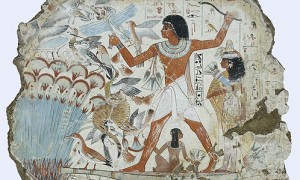“Villagers were also made to burn grain bins if they had planted ‘unlucky’ foreign seeds.”
Cooking the books
The news that the DNA in medieval parchments is to be fingerprinted has been making quite a splash. Parchments are made of animal skins, of course, and it seems that it is possible to recover DNA in decent shape — the latest example of archeogenetics. The idea is to produce “a taxonomy of manuscript manufacture,” which must be of tremendous excitement to medievalists. But John Hawks describes another possible application in his anthropological blog that’s more in line with our agrobiodiversity interests here:
…the results may be equally useful for understanding the processes of animal breeding in medieval Europe. Today’s domesticated breeds are a remnant of a much larger diversity of local breeds that once existed. People bred animals both locally by selection and across large regions by introducing favored animals from long distances. Sometimes they favored diversity — and considering the revival of interest in legacy breeds like Highland cattle.
Wish I’d thought of that…
Nibbles: Map, Healthy foods, Ireland, Farmers’ Markets, Tea, ACSS, Coconut
- Bill funds Africa soil map.
- Healthy foods. Pace the blogger, I could probably get all of them in Nairobi.
- First Irish farmers came and went.
- Pssst! Wanna start your own Farmers’ Market?
- Tea.
- The African Crop Science Society has a website.
- Coconut: the lazy man’s crop. Thousands of women batter down Sun Star’s doors.
Go, dormouse
I do hope the English dormouse population takes off. Because then the Brits could start eating the cute little things again.
Nebamun redux
One — or at least part of one — of the great agrobiodiversity-themed art works of the ancient world is back. Apart from “Fowling in the marshes,” reproduced below, Nebamun’s painted tomb includes representations of a garden pool, wine-making, and food offerings.

Photograph: The British Museum